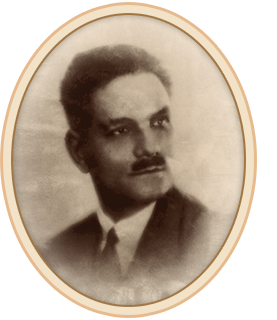 Selim Hassan was born in 1887. His basic education was at the high teachers school, then he joined the Department of the Archaeological Studies founded by Ahmed Kamal Pasha, the first Egyptian Egyptologist at the private Egyptian University.He graduated in 1912 and worked as a teacher at secondary schools for some years in his early youth. Ahmed Kamal Pasha would not have ever imagined that Selim Hassan, one of his seven students to graduate from the first Egyptology school in Egypt in 1912, would be one of the pioneering Egyptologists who left significant literature in a profession dominated by non Egyptians at that time, thus breaking one of the biggest taboos of the period.Kamal Pasha wanted to influence Egyptians and educate them to appreciate and protect their glorious antiquities, he struggled to appoint two of his students at the Egyptian Museum of Tahrir in 1921; Selim Hassan was one of them together with Mahmoud Hamza. Selim Hassan’s independent travels in Europe, especially in Germany and Austria, enriched his knowledge and experience as he had the opportunity to see unique ancient Egypt artifacts not existant in the Egyptian Museum of Cairo. He was fascinated with and proud of the huge number of visitors of the Ancient Egyptian sections at the European museums of Berlin, Hildsheim,Vienna, and the Louvre. In 1927, Selim Hassan obtained several diplomas from France including a diploma in Ancient Egyptian Language and Ancient Egyptian Religion from the Sorbonne University, a diploma in Archaeology from “École du Louvre”, and a diploma in Oriental Languages from the Catholic College. Later, he obtained his doctorate degree from Vienna University in 1935. Upon his return, he made history when he was appointed as the first Egyptian Professor of Egyptology in the University of Cairo. He spearheaded the ''Egyptianization'' movement not only at the university but also at the Antiquities Services in which he was made deputy (1936-1939) to be responsible for all the monuments in the Nile Valley. Although, he was an excavator, his articles influenced the public and caught the eye of the Egyptian Press which considered that it was a relief, that Professor Selim Hassan had begun to open a new era in which the excavation for Egyptian monuments and the writing of the remaining part of the history of ancient Egypt was transferred gradually from the hands of foreigners to the hands of the Egyptians. Selim Hassan was the first Egyptian Egyptologist to begin an active career in excavations from 1929 to 1939 and for the first time in history, his excavation work was assigned by the Egyptian University.
Selim Hassan was born in 1887. His basic education was at the high teachers school, then he joined the Department of the Archaeological Studies founded by Ahmed Kamal Pasha, the first Egyptian Egyptologist at the private Egyptian University.He graduated in 1912 and worked as a teacher at secondary schools for some years in his early youth. Ahmed Kamal Pasha would not have ever imagined that Selim Hassan, one of his seven students to graduate from the first Egyptology school in Egypt in 1912, would be one of the pioneering Egyptologists who left significant literature in a profession dominated by non Egyptians at that time, thus breaking one of the biggest taboos of the period.Kamal Pasha wanted to influence Egyptians and educate them to appreciate and protect their glorious antiquities, he struggled to appoint two of his students at the Egyptian Museum of Tahrir in 1921; Selim Hassan was one of them together with Mahmoud Hamza. Selim Hassan’s independent travels in Europe, especially in Germany and Austria, enriched his knowledge and experience as he had the opportunity to see unique ancient Egypt artifacts not existant in the Egyptian Museum of Cairo. He was fascinated with and proud of the huge number of visitors of the Ancient Egyptian sections at the European museums of Berlin, Hildsheim,Vienna, and the Louvre. In 1927, Selim Hassan obtained several diplomas from France including a diploma in Ancient Egyptian Language and Ancient Egyptian Religion from the Sorbonne University, a diploma in Archaeology from “École du Louvre”, and a diploma in Oriental Languages from the Catholic College. Later, he obtained his doctorate degree from Vienna University in 1935. Upon his return, he made history when he was appointed as the first Egyptian Professor of Egyptology in the University of Cairo. He spearheaded the ''Egyptianization'' movement not only at the university but also at the Antiquities Services in which he was made deputy (1936-1939) to be responsible for all the monuments in the Nile Valley. Although, he was an excavator, his articles influenced the public and caught the eye of the Egyptian Press which considered that it was a relief, that Professor Selim Hassan had begun to open a new era in which the excavation for Egyptian monuments and the writing of the remaining part of the history of ancient Egypt was transferred gradually from the hands of foreigners to the hands of the Egyptians. Selim Hassan was the first Egyptian Egyptologist to begin an active career in excavations from 1929 to 1939 and for the first time in history, his excavation work was assigned by the Egyptian University.
He discovered many of the Giza mastaba tombs and undertook a great deal of digging there.Moreover, he unearthed the Sphinx and its temple, and completely digging out the great amphitheater around it ensuring that it would not be buried again by sand easily. In addition, he wrote a study on the work of Amenhotep II and his temple. He discovered the so-called Fourth Pyramid or the Palace - Façade Tomb of Queen Khentkawes'' of the Fourth Dynasty, and also the funerary town of the priests associated with it. He worked at Saqarrah on the causeway and Valley Temple of King Wanis, discovering 17 mastaba tombs around this area. After his retirement, he dedicated his time to writing before he died in 1961. Selim Hassan published about 53 books and tens of articles on Egyptology in Arabic, English, and French such as ‘Excavations at Giza’, 10 volumes, in 1929-1939; ‘Excavations at Sakkara’, 3 volumes in 1937-1938; ‘Encyclopaedia of Ancient Egypt History’, 18 volumes which he finished in 20 years; ‘the Hymns religieux du Moyen Empire’ in 1928; ‘Le Poéme dit de Pentaour et le Rapport Officiel sur la Bataille de Qadesh’, in 1929; ‘The Sphinx, Its History in the Light of Recent Excavations’, in 1949; ‘Report on the Monument of Nubia’, in 1955.
